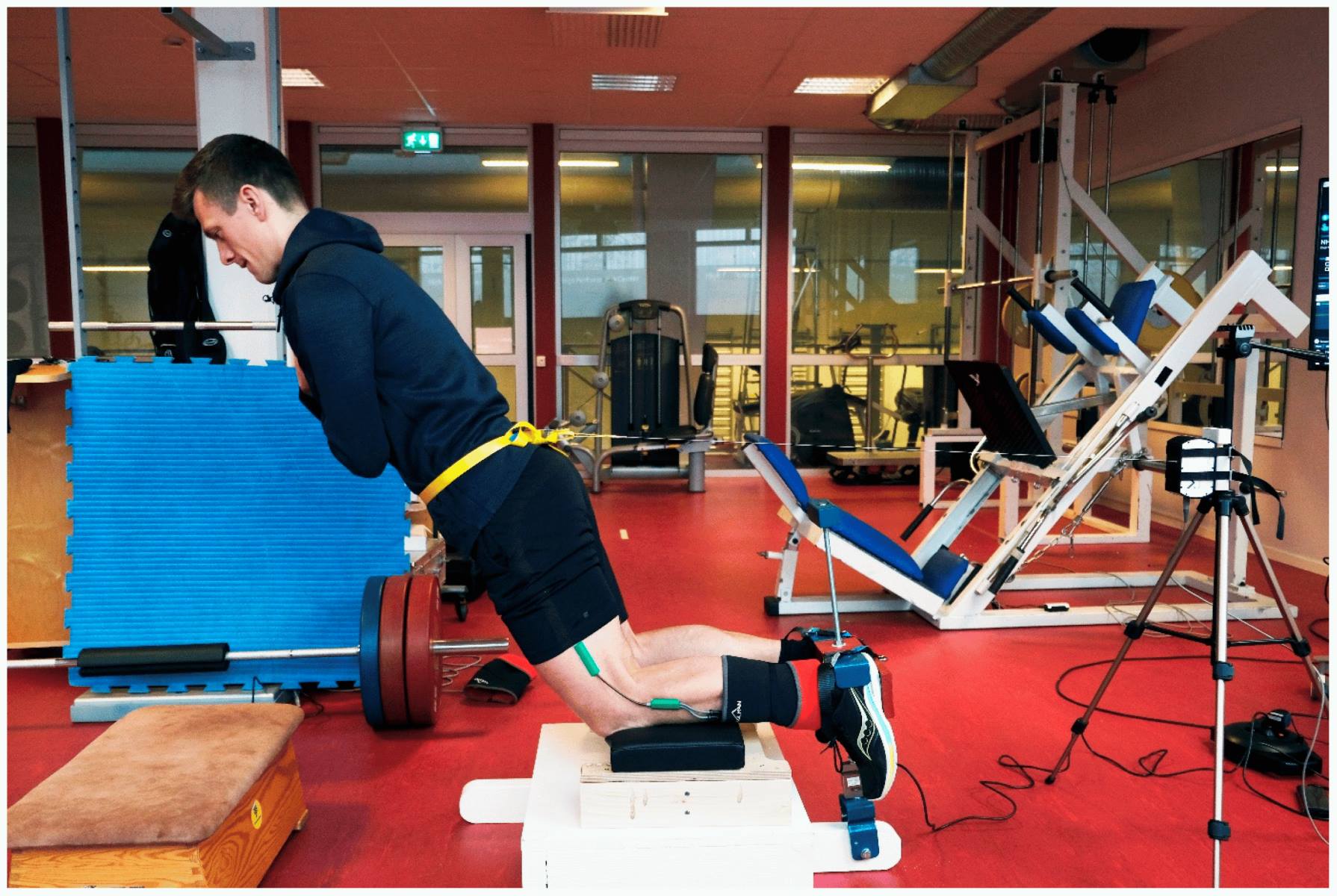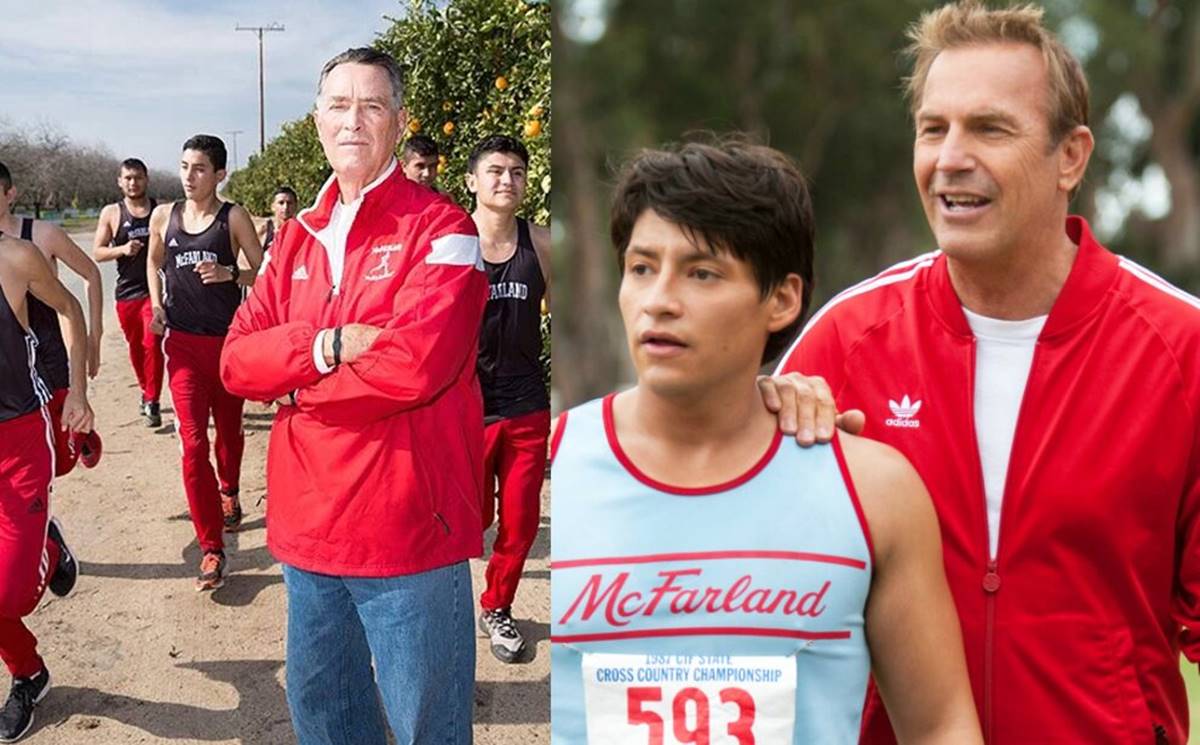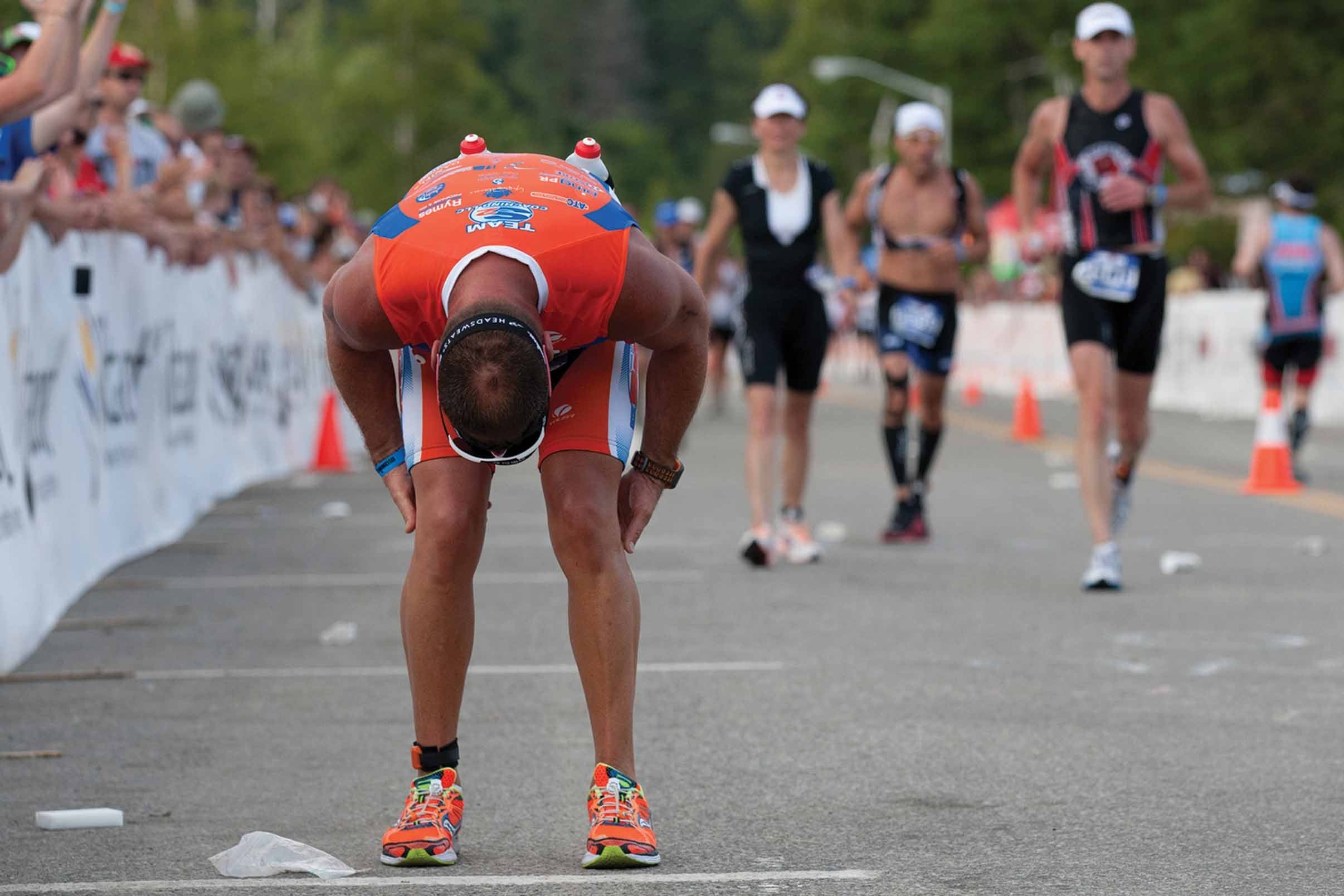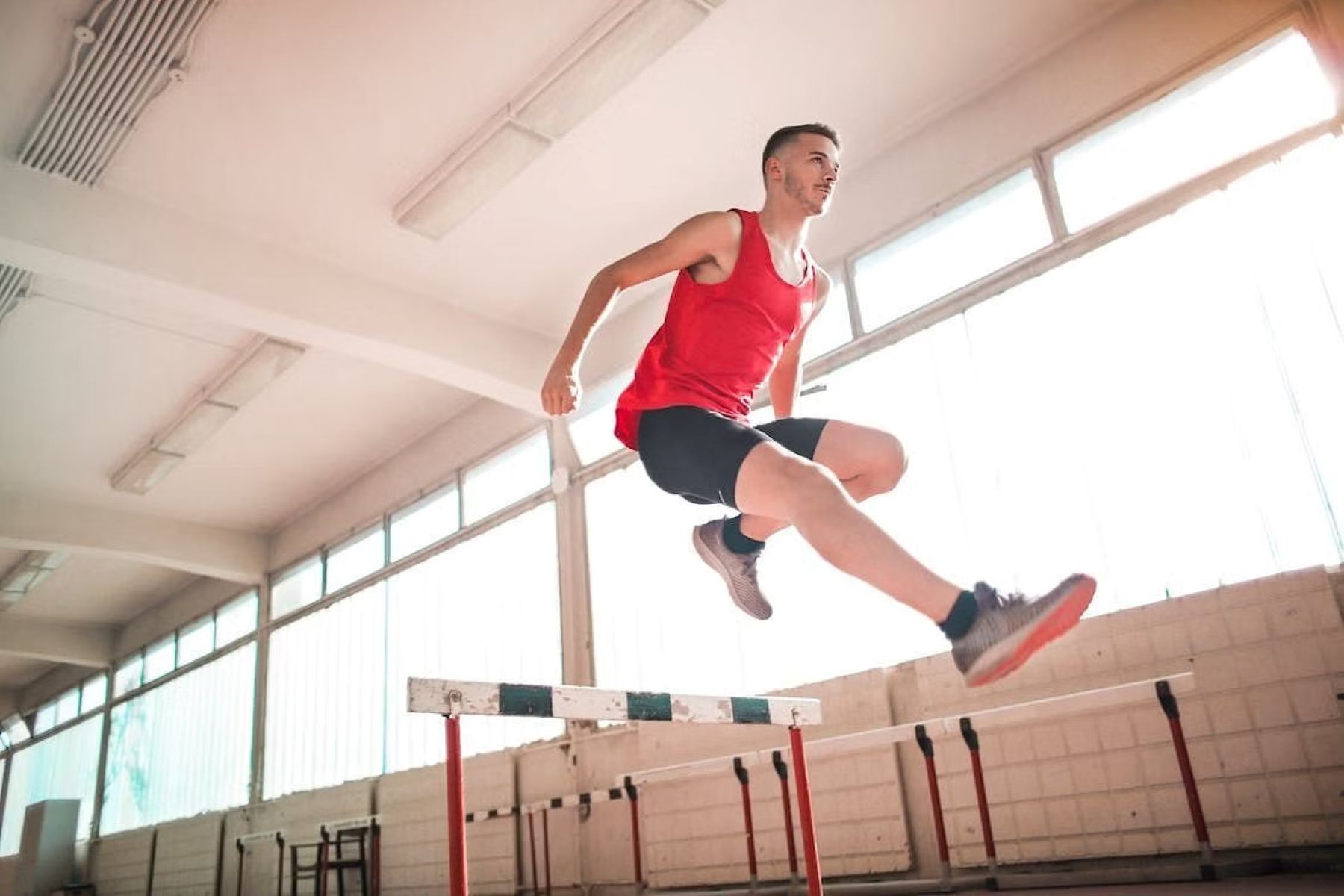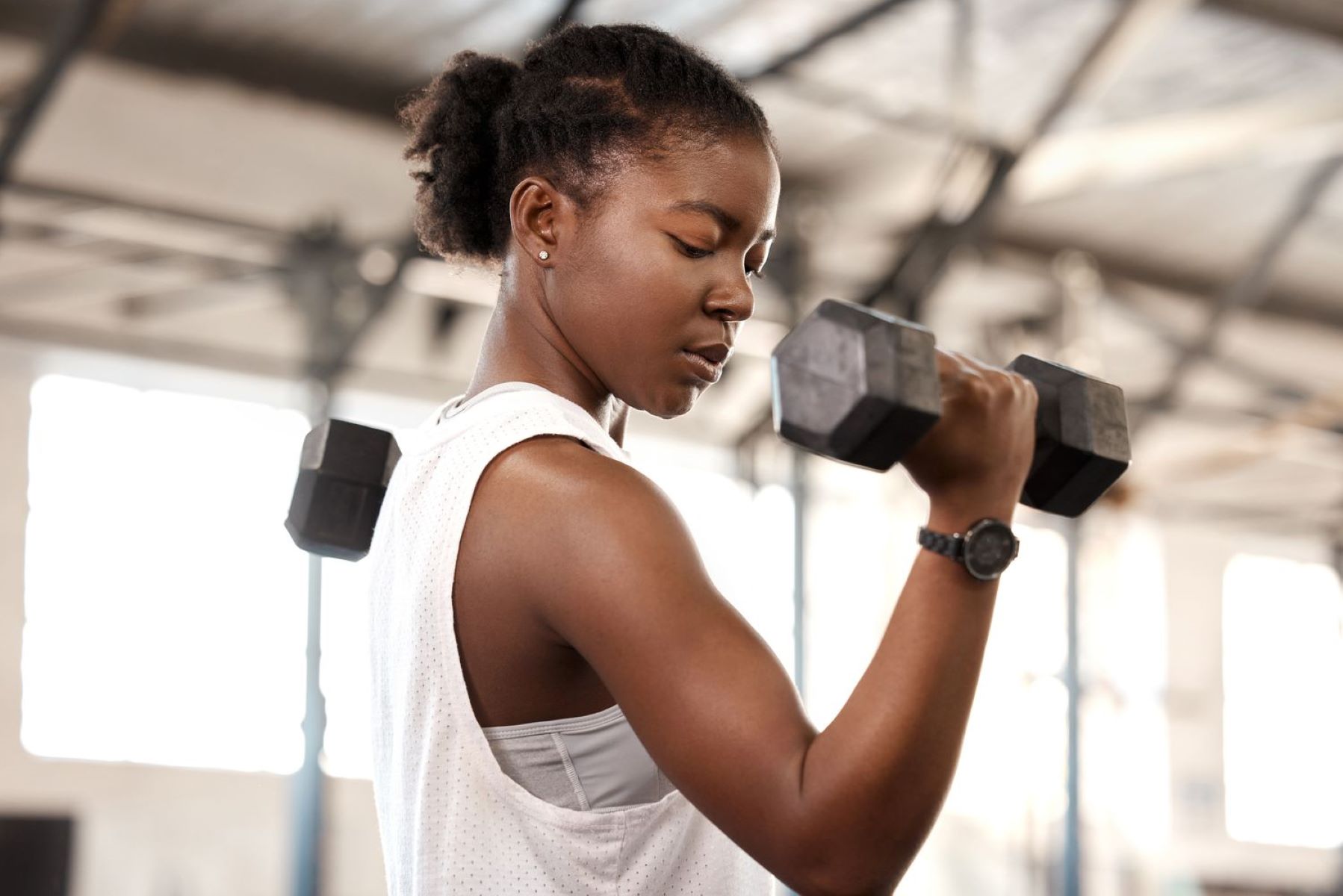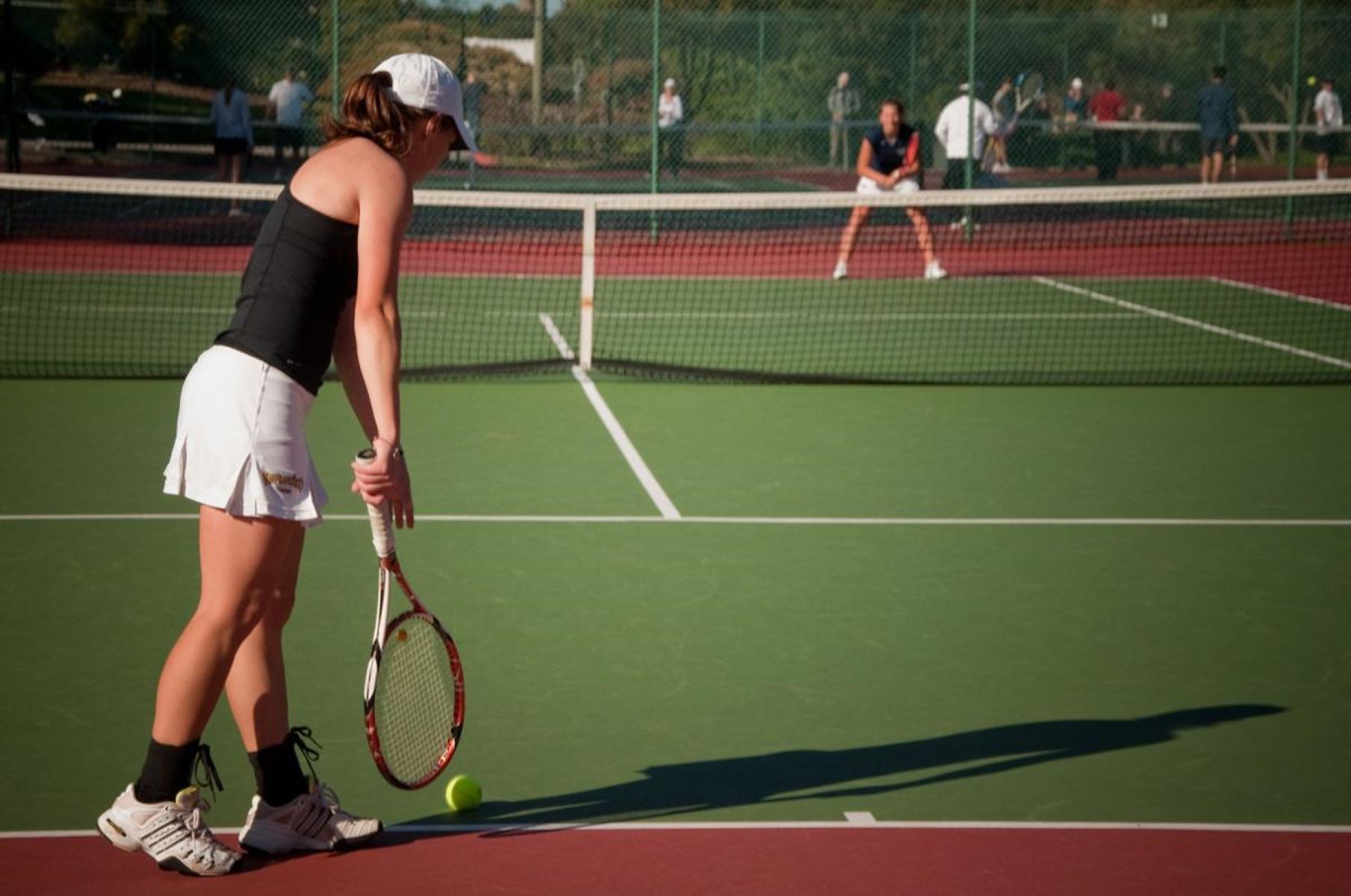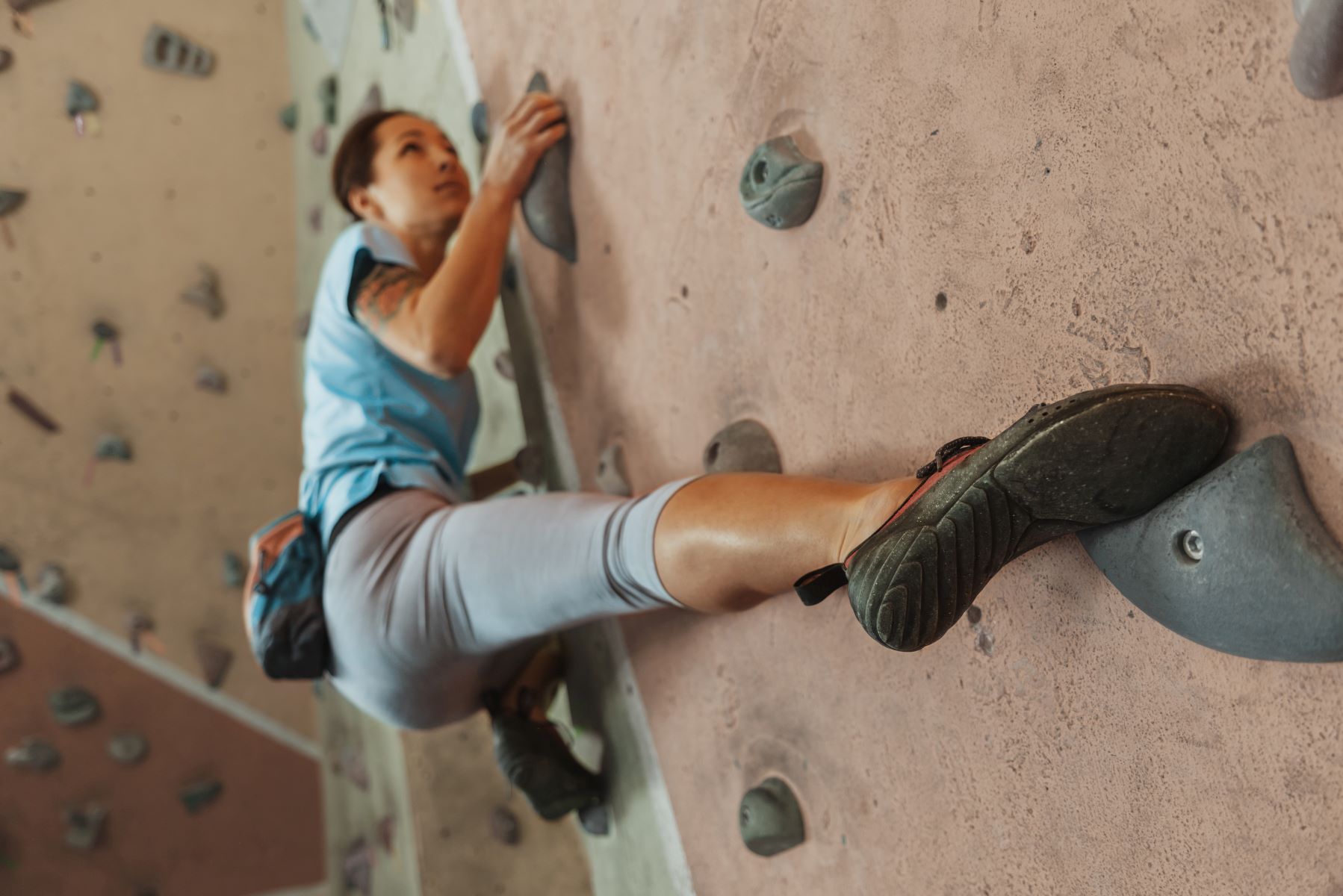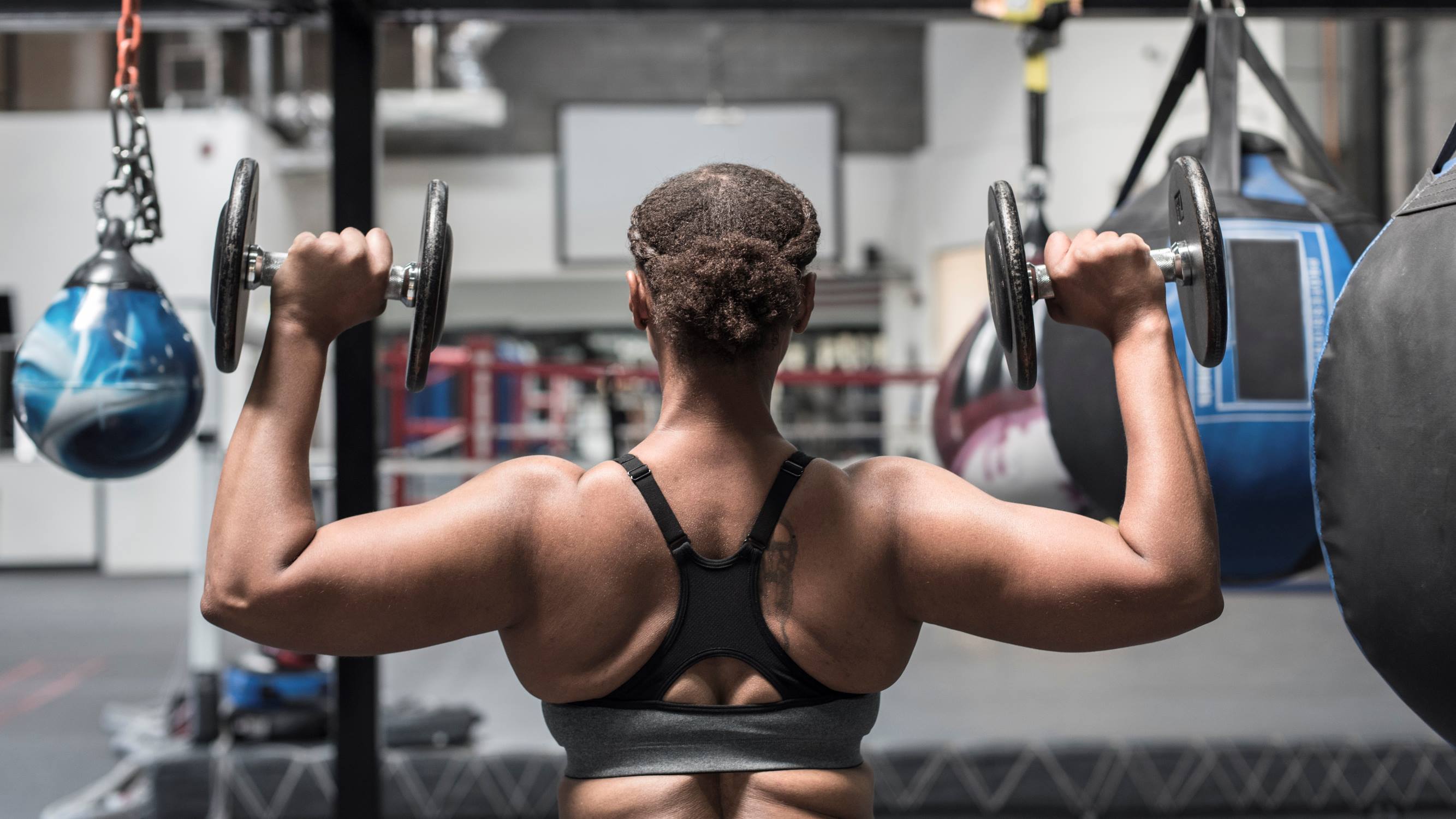Home>Misc>Featured>Describe Why Individual Sports Might Require Better Physical Endurance As Opposed To Team Sports
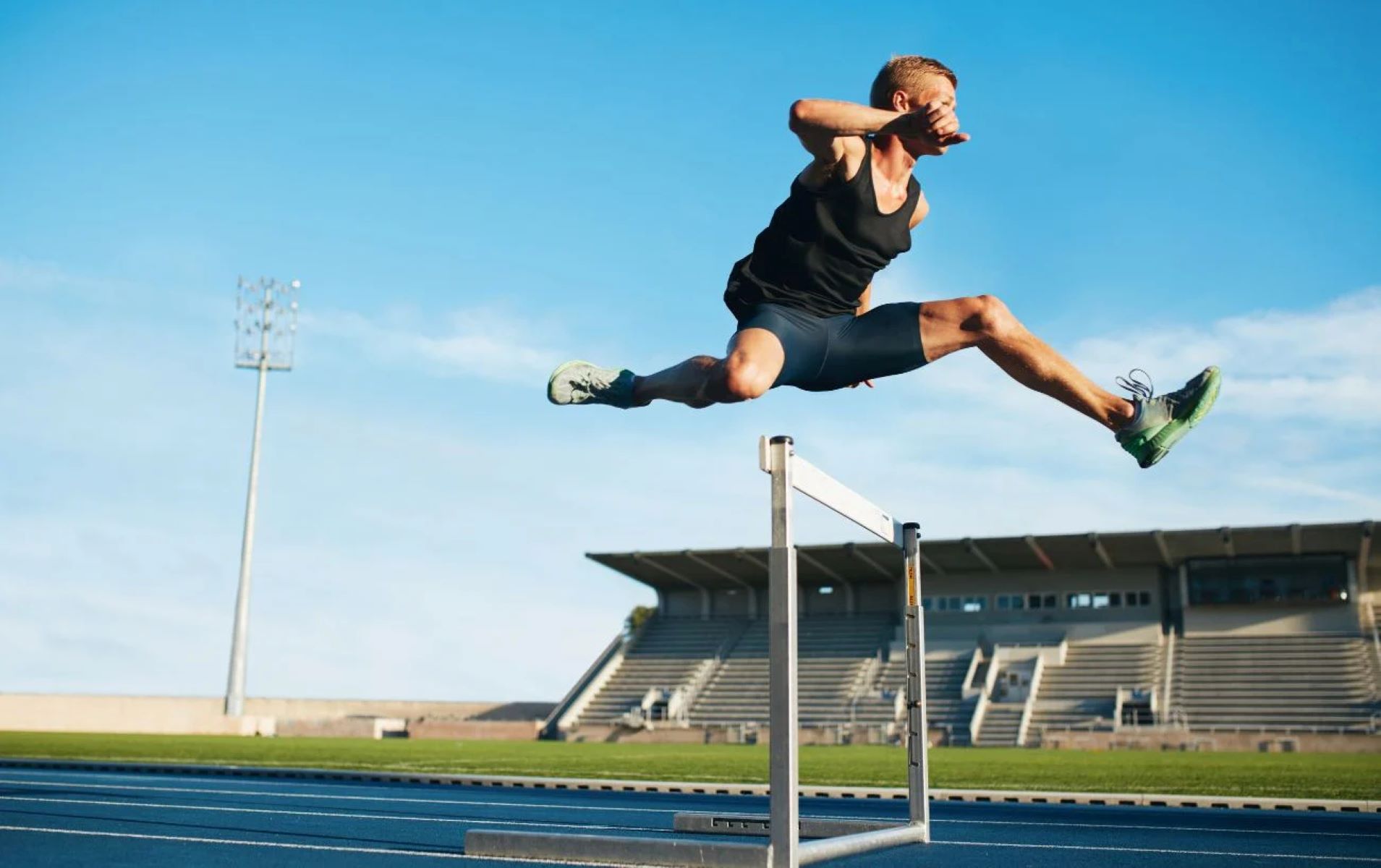

Featured
Describe Why Individual Sports Might Require Better Physical Endurance As Opposed To Team Sports
Modified: August 19, 2023
Discover why individual sports require better physical endurance in contrast to team sports. Explore the featured benefits of focusing on personal strength and stamina.
Introduction
When it comes to sports, there are two major categories that athletes participate in: individual sports and team sports. While both types require physical fitness and skill, individual sports tend to place a greater emphasis on the athlete’s personal physical endurance. In contrast, team sports rely on coordinated teamwork and strategic collaboration. The unique demands of each type of sport can greatly impact the level of physical endurance required to excel.
Individual sports, as the name implies, are those in which athletes compete on their own, without the support of a team. Examples of individual sports include swimming, track and field, cycling, and gymnastics. In these sports, athletes are solely responsible for their performance and must rely on their own abilities to push through the challenges they face. This places a significant emphasis on the need for exceptional physical endurance.
On the other hand, team sports involve a group of individuals working together towards a common goal. This includes sports such as soccer, basketball, hockey, and volleyball. In team sports, success is achieved through collaboration, communication, and strategy. While physical endurance is still crucial in team sports, the burden is shared among team members, allowing for rest and recovery during gameplay.
The importance of physical endurance in sports cannot be overstated. It is a fundamental aspect that directly impacts an athlete’s performance, stamina, and overall success. Physical endurance is the ability to sustain physical activity over an extended period, fighting fatigue, and maintaining optimal performance levels. Endurance training helps athletes to build cardiovascular strength, muscular endurance, and mental fortitude.
There are several factors that influence an athlete’s level of physical endurance, including genetics, training methods, nutrition, and overall lifestyle. Athletes who participate in individual sports often dedicate significant time and effort towards endurance training, as they must possess a higher level of stamina to compete effectively on their own. They engage in activities such as long-distance runs, high-intensity interval training, and weightlifting to build endurance and improve performance.
In contrast, team sports require a diverse skill set, including agility, coordination, and the ability to work effectively with others. While individual endurance is still a crucial factor in team sports, the focus is often on short bursts of intense activity, followed by periods of rest. As a result, endurance training in team sports is typically focused on interval training, explosive movements, and developing quick recovery times.
In the following sections, we will explore the differences in physical endurance requirements between individual sports and team sports. We will also delve into the benefits of better physical endurance in both types of sports, highlighting the impact it has on an athlete’s performance and overall success.
Definition of Individual Sports
Individual sports refer to athletic activities in which participants compete on their own, without the support or involvement of a team. These sports emphasize the individual’s performance and personal skill, as athletes strive to achieve their personal best and outperform their competitors.
In individual sports, athletes are solely responsible for their performance and must rely on their own abilities to succeed. They train and compete independently, often setting their own goals and pushing themselves to surpass their previous achievements. Examples of individual sports include swimming, track and field, cycling, gymnastics, tennis, golf, and martial arts.
What sets individual sports apart from team sports is the lack of reliance on teammates. Athletes in individual sports do not have the luxury of depending on others to compensate for their weaknesses or share the workload. They must possess a wide range of skills and attributes, including physical strength, flexibility, agility, coordination, and mental toughness.
Individual sports can be physically demanding, requiring athletes to possess exceptional endurance, speed, power, and precision. Each sport has its own unique set of technical skills and strategies that athletes must master to excel. For instance, track and field athletes need to focus on speed and explosiveness, while swimmers require strong cardiovascular endurance and efficient stroke techniques.
In individual sports, athletes face intense pressure as they strive for personal growth and achievement. They must overcome obstacles and mental challenges on their own, demonstrating resilience, discipline, and the ability to stay focused under pressure. Individual sports require athletes to possess a strong sense of self-motivation and drive, as they often face the ups and downs of their sporting journey alone.
The training methods in individual sports revolve around improving personal abilities and refining technical skills. Athletes engage in targeted exercises, drills, and practice sessions to enhance their physical fitness, technique, and decision-making abilities. They often work closely with coaches and trainers who specialize in their specific sport, honing their skills and developing personalized training programs.
Individual sports offer athletes a unique opportunity for personal growth and self-discovery. Athletes in these sports learn to take ownership of their successes and failures, and develop a deep understanding of their strengths and weaknesses. They also learn valuable life skills such as discipline, time management, goal-setting, and perseverance, which can be applied in various aspects of their lives.
In summary, individual sports are athletic activities in which athletes compete on their own, without the involvement of a team. These sports emphasize personal performance, skill development, and mental toughness. Athletes in individual sports must possess a wide range of physical and mental attributes, as they strive to achieve their personal best and push the boundaries of their abilities.
Definition of Team Sports
Team sports are athletic activities in which groups of individuals work together in a coordinated manner towards a common goal. These sports emphasize collaboration, communication, and strategic planning, as athletes combine their skills and efforts to achieve success as a team.
In team sports, athletes rely on one another to achieve victory. They must work together, using their individual strengths and abilities, to overcome challenges and outperform their opponents. Examples of team sports include soccer, basketball, hockey, volleyball, rugby, and American football.
What distinguishes team sports from individual sports is the reliance on teamwork and cooperation. Athletes in team sports must learn to trust and support one another, communicate effectively, and make decisions collectively. They need to develop a strong understanding of each team member’s role, allowing them to allocate responsibilities and create effective strategies.
Team sports often require athletes to possess a diverse range of skills. Each position or role within the team requires a specific set of abilities, such as passing, shooting, defending, and goalkeeping. Athletes must learn to work together, combining their skills and understanding of the game to achieve victory.
Physical endurance remains important in team sports, but it is often complemented by other attributes such as speed, agility, and coordination. Since athletes in team sports play in a dynamic and constantly changing environment, they need to be able to adapt quickly and make split-second decisions. They must possess good spatial awareness, excellent hand-eye coordination, and the ability to react swiftly to the actions of both teammates and opponents.
Training in team sports focuses on developing individual skills as well as team dynamics. Athletes engage in drills, practice sessions, and tactical exercises that simulate game situations. Additionally, coaches and trainers place great emphasis on building team chemistry and fostering a sense of trust and camaraderie among teammates.
Participating in team sports offers athletes numerous benefits. They learn the value of cooperation and collaboration, enabling them to work effectively in groups both on and off the field. Athletes also develop essential social skills, such as communication, leadership, and conflict resolution, which can translate into success in various aspects of life.
Team sports provide a sense of belonging and camaraderie, fostering a supportive environment where athletes can rely on one another for motivation and encouragement. They learn to celebrate victories together, support each other through difficult times, and share the joy of achieving common goals.
In summary, team sports involve groups of athletes working together towards a shared objective. These sports emphasize teamwork, cooperation, and strategic planning. Athletes in team sports develop a wide range of skills, both physical and interpersonal, and benefit from a supportive and collaborative environment that encourages personal growth and success as a team.
Importance of Physical Endurance in Sports
Physical endurance plays a crucial role in sports performance, regardless of whether it is an individual sport or a team sport. It is the ability to sustain physical activity over an extended period, fighting fatigue, and maintaining optimal performance levels. Endurance is a fundamental aspect of athletic success, and here’s why it is so important.
First and foremost, physical endurance allows athletes to perform at their peak for longer durations. In sports that require continuous movement, such as long-distance running or cycling, endurance ensures that athletes can maintain a consistent pace throughout the event. It enables them to push through physical fatigue and mental barriers, giving them the competitive edge necessary to outlast their opponents.
In team sports, endurance is equally vital. It allows athletes to maintain the intensity and effort required to execute game strategies and tactics effectively. Endurance enables players to stay on the field for extended periods, contributing to their team’s success. It also helps prevent injuries and decreases the likelihood of making crucial mistakes due to fatigue.
Physical endurance not only enhances performance during games and competitions but also impacts training. Athletes with higher endurance levels can endure longer, more intense training sessions, leading to improved overall physical fitness. This translates to better stamina, increased durability, faster recovery times, and reduced risk of injury.
Endurance training also has significant cardiovascular benefits. Engaging in activities that challenge the heart and lungs strengthens these vital organs, improving blood flow and oxygen delivery throughout the body. This, in turn, enhances overall cardiovascular health, enabling athletes to perform at higher levels for extended periods.
Furthermore, physical endurance has direct implications on an athlete’s mental fortitude. The ability to push through physical discomfort and mental fatigue builds resilience and determination. Athletes with higher endurance levels are often more mentally tough, capable of maintaining focus and staying motivated even when faced with adversity.
Having superior physical endurance can also provide a psychological advantage. Athletes who know they have trained their bodies to endure physical challenges gain confidence in their abilities. This confidence can positively impact their performance by reducing anxiety and improving concentration.
Endurance training is not limited to long-duration activities. High-intensity interval training (HIIT) is a popular method that involves short bursts of intense exercise followed by brief recovery periods. HIIT improves anaerobic and aerobic capacities, allowing athletes to rapidly recover from high-intensity efforts and perform repeated bursts of explosive movements.
In summary, physical endurance is of utmost importance in sports. It enables athletes to perform at their optimal levels for longer durations, both during games and training sessions. It enhances cardiovascular health, mental fortitude, and provides a competitive advantage. Endurance training is an essential component of an athlete’s preparation, helping them achieve their goals and excel in their chosen sports.
Factors Affecting Physical Endurance in Sports
Physical endurance is influenced by various factors that can significantly impact an athlete’s ability to sustain physical activity and perform at an optimal level. Understanding these factors is crucial for athletes and coaches to develop effective training strategies and optimize performance. Let’s explore some of the key factors that influence physical endurance in sports.
1. Genetics: An individual’s genetic makeup can influence their potential for physical endurance. Some individuals possess genetic traits that allow them to have a higher aerobic capacity and greater endurance compared to others. While genetics play a role, it is important to note that proper training and conditioning can still significantly improve an athlete’s endurance regardless of their genetic predispositions.
2. Training Methods: The training methods employed by athletes have a direct impact on their physical endurance. Endurance training involves specific exercises and routines that improve aerobic capacity and muscular endurance. Regular endurance training, such as long-distance runs, interval training, and high-intensity workouts, helps improve the body’s ability to efficiently utilize oxygen and energy, leading to increased endurance.
3. Nutrition: Proper nutrition plays a vital role in optimizing physical endurance. A well-balanced diet that provides essential nutrients such as carbohydrates, proteins, fats, vitamins, and minerals helps fuel the body and support optimal performance. Adequate hydration is also critical for maintaining endurance, as dehydration can negatively impact athletic performance and endurance levels.
4. Rest and Recovery: Sufficient rest and recovery periods are essential for improving physical endurance. During rest periods, the body repairs and strengthens muscles, allowing them to adapt and become more resilient. Overtraining, on the other hand, can lead to fatigue, decreased performance, and increased risk of injuries. Finding the right balance between training and rest is crucial to optimize physical endurance.
5. Mental Strength: Endurance is not just physical; it is also mental. The mental strength and resilience of an athlete can significantly impact their ability to push through physical discomfort and fatigue. Mental toughness, focus, determination, and the ability to overcome mental barriers are key factors in enhancing endurance. Psychological techniques such as visualization, positive self-talk, and goal setting can also aid in improving mental endurance.
6. Environmental Factors: Environmental conditions can affect an athlete’s physical endurance. Factors such as temperature, humidity, altitude, and air quality can impact how the body responds to physical activity. Training in varying environmental conditions can help athletes adapt and improve their endurance levels to perform optimally in different situations.
7. Lifestyle Factors: Lifestyle choices, such as sleep patterns, stress levels, and overall health, can influence physical endurance. Adequate sleep is essential for recovery and optimal performance, while high levels of stress can hamper endurance levels. Maintaining a healthy lifestyle through regular exercise, proper nutrition, and stress management can positively contribute to physical endurance.
Understanding these factors and their impact on physical endurance can help athletes and coaches develop targeted training programs and make necessary adjustments to optimize endurance levels. By addressing these factors, athletes can improve their overall performance and achieve their goals in their chosen sports.
Comparison of Physical Endurance Requirements in Individual Sports and Team Sports
While both individual sports and team sports require physical endurance, there are distinct differences in the specific endurance requirements between the two. The nature of the sport, the intensity and duration of gameplay, and the dynamics of competition all contribute to variations in the level of physical endurance needed. Let’s compare the physical endurance requirements in individual sports and team sports.
In individual sports, athletes are solely responsible for their performance and must rely on their own physical endurance to excel. These sports typically demand a high level of personal stamina, as athletes have no teammates to lean on or share the workload. Individual athletes must possess exceptional endurance to sustain their performance over the entire duration of a competition, often pushing through fatigue and mental barriers independently.
On the other hand, team sports distribute physical endurance demands among multiple players. While individual endurance is still important, the burden is shared within the team, allowing for periods of rest and recovery during gameplay. Team sports often involve short bursts of intense activity followed by brief periods of rest, requiring athletes to possess the physical endurance to perform at high intensities during those bursts.
Additionally, the roles and positions within team sports can influence the specific physical endurance requirements. For example, certain positions in sports like soccer or basketball may require more intense, explosive bursts of activity, whereas other positions may require more sustained effort and endurance. The dynamics of teamwork also mean that athletes must maintain their performance levels to support and coordinate with their teammates effectively.
The length and intensity of competition also play a role in determining the physical endurance requirements. Individual sports events can vary in duration, from short, intense races to long-distance endurance events. Athletes must train to endure sustained physical exertion, often for extended periods. In team sports, the duration of gameplay can vary, but athletes must be prepared for multiple rounds or matches within a competition and potentially compete in intense games that last for hours.
The training methods for building physical endurance differ between individual and team sports. Individual sports often emphasize long-distance running, endurance-specific training drills, and sustained cardio workouts to improve endurance capacities. Team sports, while still incorporating aspects of endurance training, tend to focus more on interval training, explosive movements, and quick recovery times to meet the demands of the game.
Furthermore, while physical endurance is crucial in both individual and team sports, the mental aspect of endurance may differ. In individual sports, athletes often face mental challenges and must rely on their mental fortitude and self-motivation to sustain and push through physical fatigue. In team sports, athletes may draw on the support and motivation of their teammates to help them endure challenging moments during gameplay.
In summary, physical endurance requirements differ between individual sports and team sports. Individual sports demand a higher level of personal endurance, as athletes are solely responsible for their performance. Team sports distribute endurance demands among team members and often involve short bursts of intense activity. The dynamics of competition, positions within team sports, and training approaches further contribute to variations in physical endurance requirements. While both types of sports require physical endurance, the specific demands vary based on the nature of the sport, duration and intensity of competition, and the dynamics of teamwork.
Benefits of Better Physical Endurance in Individual Sports
Having better physical endurance in individual sports can provide athletes with significant advantages that can propel them to higher levels of performance and success. Here are some key benefits of developing and improving physical endurance in individual sports.
1. Enhanced Performance: Better physical endurance allows athletes to maintain a high level of performance for longer durations. This means they can sustain their optimal speed, power, and precision throughout a competition, giving them a competitive edge over opponents. Good endurance enables athletes to consistently perform at their best, increasing the chances of achieving personal records and surpassing previous achievements.
2. Increased Stamina: Endurance training builds stamina, allowing athletes to endure prolonged physical exertion. As a result, they can compete in longer events or perform extended routines without experiencing significant fatigue. Improved stamina enables athletes to maintain a consistent pace, stay motivated, and make fewer mistakes due to exhaustion, ultimately leading to better overall performance.
3. Mental Resilience: Building physical endurance in individual sports also cultivates mental resilience. Endurance training pushes athletes to endure physical discomfort and mental fatigue. As they overcome these challenges and develop mental toughness, they become better equipped to handle the pressures and demands of competition. Mental resilience enables athletes to stay focused, persevere through difficult moments, and perform consistently even under challenging circumstances.
4. Competitive Advantage: Better physical endurance sets athletes apart from their competitors. When others start to feel fatigued or experience a drop in performance, athletes with greater endurance can maintain their intensity and outperform their opponents. It allows them to push through difficult moments, show determination, and gain a psychological advantage over competitors who may be more prone to exhaustion.
5. Efficient Use of Energy: Endurance training helps athletes improve their energy efficiency, enabling them to utilize oxygen more effectively during physical activity. This increased efficiency reduces the amount of energy wasted, allowing athletes to perform at higher levels for longer periods without getting as tired. Efficient energy consumption can be the key to sustaining performance and achieving peak results in individual sports.
6. Injury Prevention: Better physical endurance also contributes to injury prevention. When athletes have good endurance, they are less likely to experience fatigue-related injuries during training or competition. Endurance training helps improve the strength and durability of muscles, tendons, and ligaments, reducing the risk of strain or overuse injuries. Having a strong endurance foundation in individual sports allows athletes to train and compete more effectively while reducing the likelihood of setbacks due to injuries.
7. Personal Growth and Achievement: Developing better physical endurance in individual sports promotes personal growth and a sense of accomplishment. As athletes set and achieve endurance goals, they gain confidence in their abilities and develop a stronger belief in their potential. The continuous pursuit of better endurance fosters a growth mindset, encouraging athletes to push themselves further and achieve greater heights in their sport and beyond.
In summary, better physical endurance in individual sports provides athletes with various benefits. It enhances performance, increases stamina, and boosts mental resilience. It also offers a competitive advantage, improves energy efficiency, helps prevent injuries, and fosters personal growth and achievement. Developing and improving physical endurance is a crucial aspect of success in individual sports, allowing athletes to maximize their potential and reach new levels of performance.
Benefits of Better Physical Endurance in Team Sports
Having better physical endurance in team sports can provide athletes with numerous advantages that contribute to overall team success. Here are some key benefits of developing and improving physical endurance in team sports.
1. Sustained Team Performance: Better physical endurance enables athletes to maintain a high level of performance throughout the duration of a team sports match or competition. This allows them to consistently contribute to the team’s strategy, execute plays effectively, and stay actively involved in the game. Improved endurance ensures that athletes can consistently perform at their best, positively impacting team performance as a whole.
2. Endurance in Key Moments: In team sports, there are critical moments when athletes need to perform at their peak to secure a win or shift the momentum of the game. Better physical endurance allows athletes to remain effective during these key moments, as they have the stamina to execute critical plays, make quick decisions, and push through physical and mental fatigue. Endurance in key moments can be the difference between victory and defeat.
3. Repeated Intense Efforts: Team sports often involve short bursts of intense activity followed by brief periods of rest. Having better physical endurance enables athletes to recover quickly during these rest periods, ensuring they are ready to perform at a high level for each intense effort. This ability to recover efficiently and maintain performance helps maintain the team’s momentum and puts athletes in a position to consistently contribute to the team’s success.
4. Teamwork and Collaboration: Physical endurance in team sports not only benefits individual athletes but also enhances teamwork and collaboration. When athletes have better endurance, they can keep up with the pace of the game, support their teammates effectively, and maintain consistent communication on the field. This cohesion and synchronization contribute to better overall team performance and cohesion.
5. Defensive Stability: Physical endurance plays a crucial role in team sports’ defensive aspects. Better endurance allows athletes to maintain defensive pressure for extended periods, stay alert to opponents’ movements, and cover their positions effectively. A team with athletes who possess superior endurance can exert continuous defensive pressure, making it difficult for the opposition to find gaps or exploit weaknesses.
6. Leadership and Motivation: Athletes with better physical endurance often take up leadership roles within their teams. Their ability to maintain a high level of performance and push through fatigue sets an example for their teammates. Leading by example, these athletes inspire and motivate their team members to improve their own endurance levels and perform at their best when it matters most.
7. Adaptability and Flexibility: Better physical endurance allows athletes in team sports to adapt to different game situations and play styles. They can adjust their intensity, speed, and tactical approach based on the game’s demands and the opponents they face. Adaptability and flexibility are crucial in team sports, and endurance plays a significant role in the ability to adjust and perform optimally.
In summary, better physical endurance in team sports has several benefits. It contributes to sustained team performance, facilitates success in key moments, enhances teamwork and collaboration, supports defensive stability, and provides leadership and motivation. Furthermore, improved endurance allows athletes to adapt to various game situations and play styles. Developing and improving physical endurance in team sports is essential for athletes to contribute to their team’s overall success and reach their full potential.
Conclusion
Physical endurance is a critical factor in both individual sports and team sports. While the specific endurance requirements may differ, the benefits of having better physical endurance are pervasive across both types of sports.
In individual sports, better physical endurance allows athletes to achieve peak performance, maintain stamina, and showcase mental resilience. It provides a competitive advantage, enhances energy efficiency, reduces the risk of injuries, and fosters personal growth and achievement. Athletes who possess superior endurance can push through physical and mental barriers, consistently perform at their best, and achieve their goals.
In team sports, better physical endurance contributes to sustained team performance, endurance in key moments, and effective collaboration and communication. It enhances defensive stability, provides leadership and motivation, and enables athletes to adapt to different game situations and play styles. Improved endurance in team sports benefits not only individual athletes but also the entire team, allowing for better overall performance and success.
Developing and improving physical endurance requires a combination of targeted training, proper nutrition, rest, and a strong mental attitude. Athletes and coaches must recognize the factors that influence endurance and develop tailored training programs to optimize performance. Building physical endurance is a continuous process that requires dedication, discipline, and a commitment to personal growth.
Regardless of whether an athlete participates in individual sports or team sports, the importance of physical endurance cannot be underestimated. It is a key factor that directly impacts an athlete’s performance, stamina, and overall success. Investing in endurance training, both physical and mental, can maximize an athlete’s potential, set them apart from competitors, and lead them to achieve their goals.
In summary, physical endurance is an essential aspect of sports performance, with distinct requirements in individual sports and team sports. Better physical endurance provides athletes with a range of benefits, including enhanced performance, increased stamina, mental resilience, elevated energy efficiency, injury prevention, teamwork, leadership, adaptability, and personal growth. Athletes who prioritize developing and improving their physical endurance position themselves for greater success in their chosen sports.

